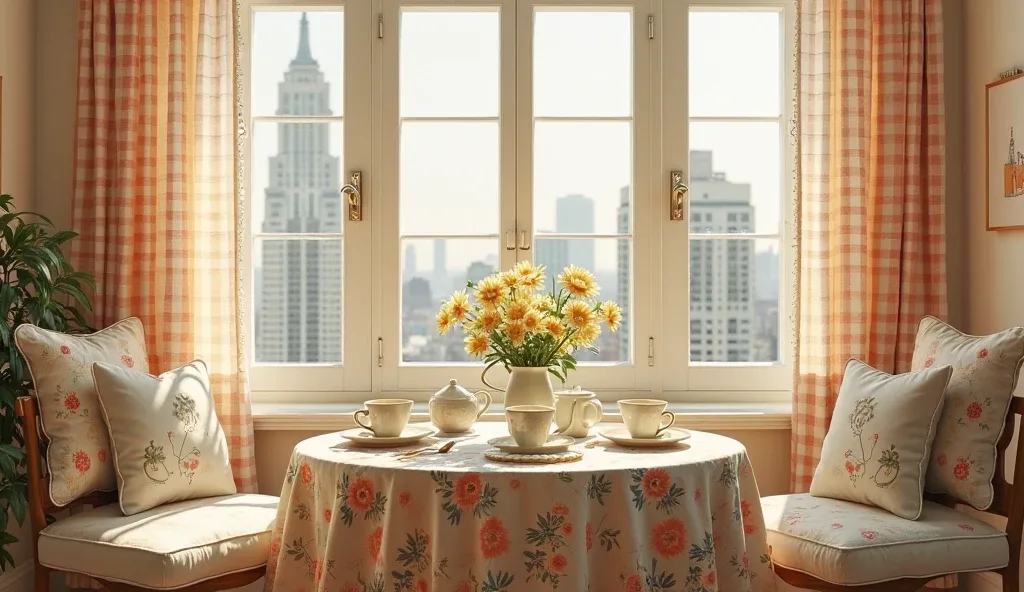Walk into most contemporary homes today and you’ll encounter the same sterile scene: sleek minimalist furniture, stark white walls, and cold surfaces that prioritize visual cleanliness over emotional comfort. These spaces might photograph beautifully for social media, but they’re doing absolutely nothing to create the kind of nurturing environments that make a house feel like a true home where people want to linger and create lasting memories.
Here’s what’s happening in the most emotionally satisfying homes right now: Grandmacore aesthetics are making a sophisticated comeback, but not in the ways you might expect. We’re not talking about dusty antique collections or outdated country cottage themes that feel frozen in time. Today’s most compelling Grandmacore interiors blend vintage charm with contemporary luxury, creating environments that feel both nostalgic and refreshingly current.
The right Grandmacore elements can make your home feel more welcoming, more personal, and infinitely more comforting than any amount of expensive modern furniture. They create spaces where conversations flow naturally, where guests immediately feel at ease, and where the simple act of coming home feels like being wrapped in a warm embrace rather than entering a showroom.
But incorporating Grandmacore elements isn’t just about collecting vintage pieces or embracing floral patterns. It’s about understanding how handmade details, family heirloom aesthetics, and nurturing design principles create emotional connections that sterile modern interiors simply cannot match. Most importantly, it’s about selecting elements that honor traditional craftsmanship while maintaining the sophistication and functionality that contemporary living requires.
Ready to discover how thoughtful Grandmacore touches can add soul and personality to your home while creating the kind of timeless beauty that never goes out of style?
The Psychology of Nostalgic Comfort in Modern Living
Understanding why Grandmacore aesthetics create such powerful emotional responses goes far beyond simple nostalgia or vintage appreciation. These design elements tap into fundamental human needs for comfort, connection, and authenticity that contemporary minimalism often overlooks in favor of visual impact.
Handmade Details and Human Connection – Grandmacore elements like embroidered linens, crocheted throws, and hand-painted ceramics carry visible evidence of human craftsmanship that creates emotional warmth impossible to achieve with mass-produced items. These details remind us of skilled hands, patient work, and the love that goes into creating beautiful objects that last for generations.
Layered Textures for Sensory Comfort – Traditional Grandmacore aesthetics naturally emphasize textile variety—quilted bedspreads, lace doilies, knitted throws, and embroidered cushions—that provide rich tactile experiences. These varied textures create environments that feel physically comforting while adding visual depth and interest that flat modern surfaces cannot match.
Color Psychology of Gentle Palettes – Grandmacore color schemes typically feature soft pastels, warm earth tones, and muted florals that promote calm and relaxation rather than the stark contrasts that can feel energizing but ultimately exhausting. These gentle palettes create backgrounds that support both active living and peaceful rest.
Ritual and Tradition Support – Grandmacore elements naturally encourage slower, more intentional living—tea time rituals, careful table setting, seasonal decorating, and appreciation for beauty in daily tasks. These design choices support lifestyle practices that promote mindfulness and connection with family traditions.
Creating Sophisticated Vintage Integration
The difference between successfully incorporating Grandmacore elements and creating spaces that feel dated or overwhelming lies in understanding how to blend traditional craftsmanship with contemporary sophistication and modern functionality.
Quality Over Quantity Selection – The most successful Grandmacore interiors feature carefully curated vintage and vintage-inspired pieces rather than attempting to recreate historical rooms completely. Choose exceptional examples of traditional crafts—a museum-quality quilt, authentic antique ceramics, or professionally restored furniture—rather than filling spaces with mediocre vintage items.
Balance Traditional with Contemporary – Blend Grandmacore elements with modern conveniences and contemporary furniture to create environments that feel current rather than like period museum displays. A beautiful vintage china collection displayed in sleek modern shelving, or handmade textiles on contemporary furniture, creates sophisticated fusion that honors tradition while supporting modern living.
Scale and Proportion Considerations – Modern homes often have different proportions than the spaces Grandmacore elements were originally designed for. Consider how vintage pieces will work within contemporary room sizes and ceiling heights, choosing items that complement rather than overwhelm your existing architecture.
Lighting for Authentic Atmosphere – Traditional Grandmacore elements look their best in warm, soft lighting that mimics the candlelight and oil lamps they were originally designed to complement. Layer different light sources and choose warm color temperatures to create atmospheric conditions that enhance rather than flatten vintage textures and colors.
Balancing Sentiment with Sophistication
The challenge with Grandmacore design is creating environments that feel emotionally meaningful and personally authentic while maintaining the refined aesthetic standards that contemporary luxury living requires.
Heirloom Integration Strategy – The most meaningful Grandmacore elements often come from family collections or antique finds that carry personal stories. Learn to display these treasured pieces in ways that honor their significance while ensuring they contribute to rather than dominate your overall design aesthetic.
Maintenance and Practicality Planning – Traditional textiles and vintage items often require more careful maintenance than contemporary alternatives. Consider your lifestyle and care capabilities when selecting Grandmacore elements, choosing pieces that you can properly maintain while ensuring they remain beautiful and functional over time.
Seasonal Flexibility Design – Grandmacore aesthetics naturally support seasonal decorating traditions that can refresh your home’s appearance throughout the year. Plan your foundational vintage elements to accommodate seasonal additions—holiday linens, garden flowers, or festive accessories—without requiring major rearrangement.
Investment vs. Inspiration Balance – Distinguish between expensive antique investments and affordable vintage-inspired pieces that achieve similar aesthetic results. Focus your budget on a few exceptional authentic pieces while supplementing with well-made reproductions that provide the Grandmacore feeling without the maintenance or cost concerns.
12 Grandmacore Ideas
Floral Wallpaper Gallery with Vintage China Collections
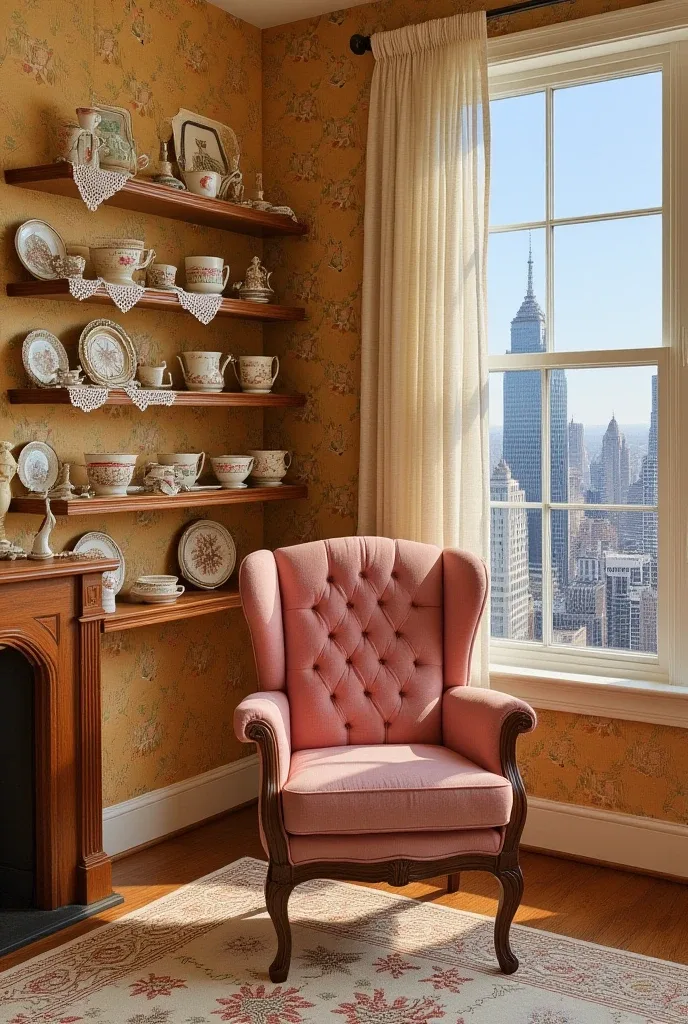
Create sophisticated display areas through delicate floral wallpapers that provide elegant backdrops for carefully curated vintage china collections. Antique wooden shelving and glass-front cabinets protect valuable pieces while allowing their beauty to enhance daily living spaces.
The floral approach requires careful pattern selection to ensure wallpapers feel fresh rather than dated. Choose sophisticated botanical designs in muted colors that complement rather than compete with displayed collections. Professional installation ensures pattern matching and longevity while appropriate lighting showcases the craftsmanship of both wallpaper and displayed items.
This strategy works particularly well for homeowners who have inherited family china or enjoy collecting vintage ceramics. The display approach makes treasured pieces part of daily life rather than special-occasion-only items stored away in closets.
Hand-Embroidered Textiles in Contemporary Kitchen Settings
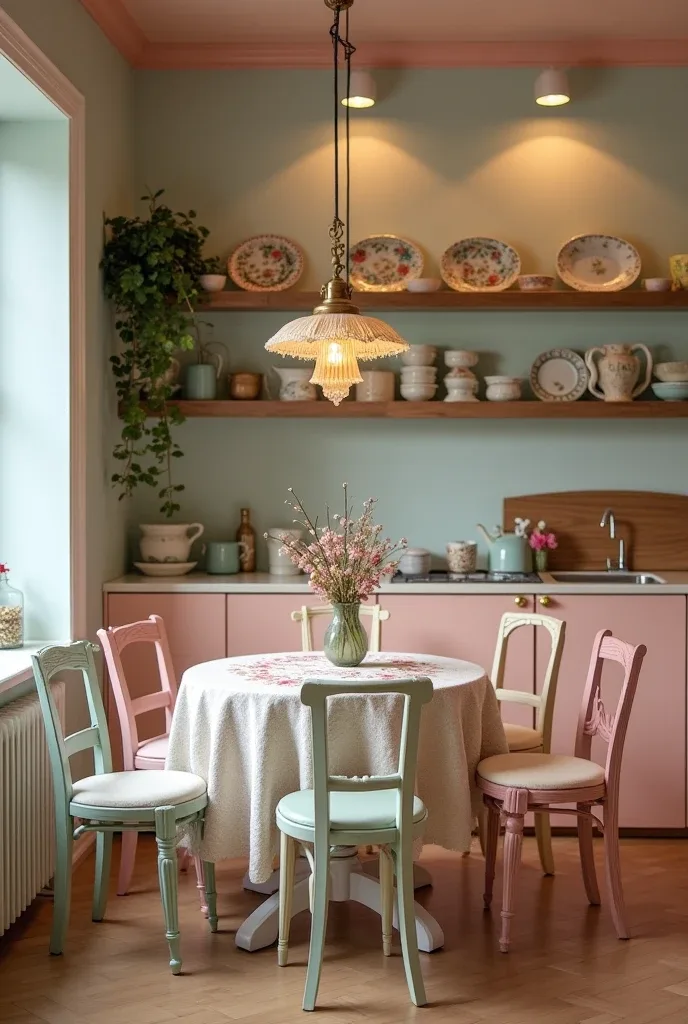
Integrate traditional needlework through carefully selected table linens, chair cushions, and window treatments that add warmth and personality to modern kitchen spaces. Mismatched vintage-style chairs and hand-embroidered tablecloths create welcoming environments that encourage lingering over meals and conversation.
The embroidered approach celebrates traditional women’s crafts while making contemporary kitchens feel more personal and less sterile. Choose pieces with excellent craftsmanship and colors that complement your existing palette while adding textural interest and visual warmth.
This design strategy appeals to homeowners who want their kitchens to feel like gathering places rather than purely functional work spaces. The handmade elements create conversation pieces while demonstrating appreciation for traditional skills and craftsmanship.
Layered Textile Comfort in Reading Retreats
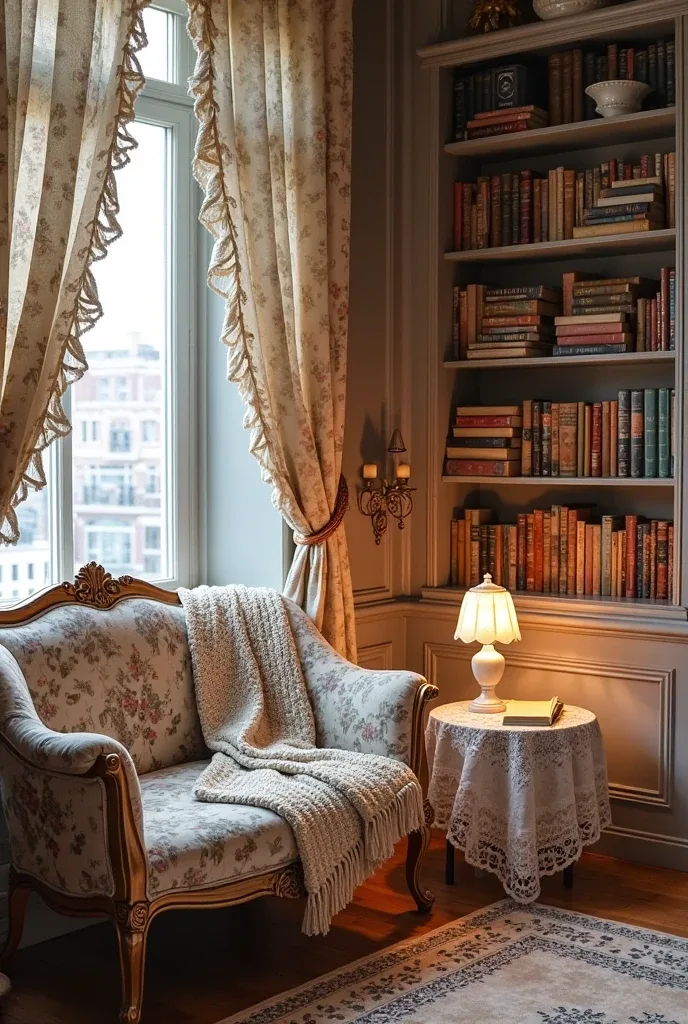
Design cozy reading environments through abundant textile layering—quilted throws, knitted blankets, embroidered cushions, and lace-trimmed curtains—that create nest-like comfort perfect for literary relaxation. Vintage floral patterns and soft pastels provide visual interest while maintaining calming atmospheres.
The textile layering approach creates environments that feel physically and emotionally comforting while providing practical benefits like temperature control and acoustic softening. Choose high-quality fabrics that will age beautifully while maintaining appropriate scale to prevent overwhelming smaller spaces.
This strategy works well for homeowners who prioritize comfort and want their reading areas to feel like personal retreats. The abundant textiles create environments that naturally encourage slower living and contemplative activities.
Also Read: 12 Bookshelf Ideas That’ll Transform Your Space Into a Literary Luxury Haven
Botanical Print Galleries in Transitional Spaces
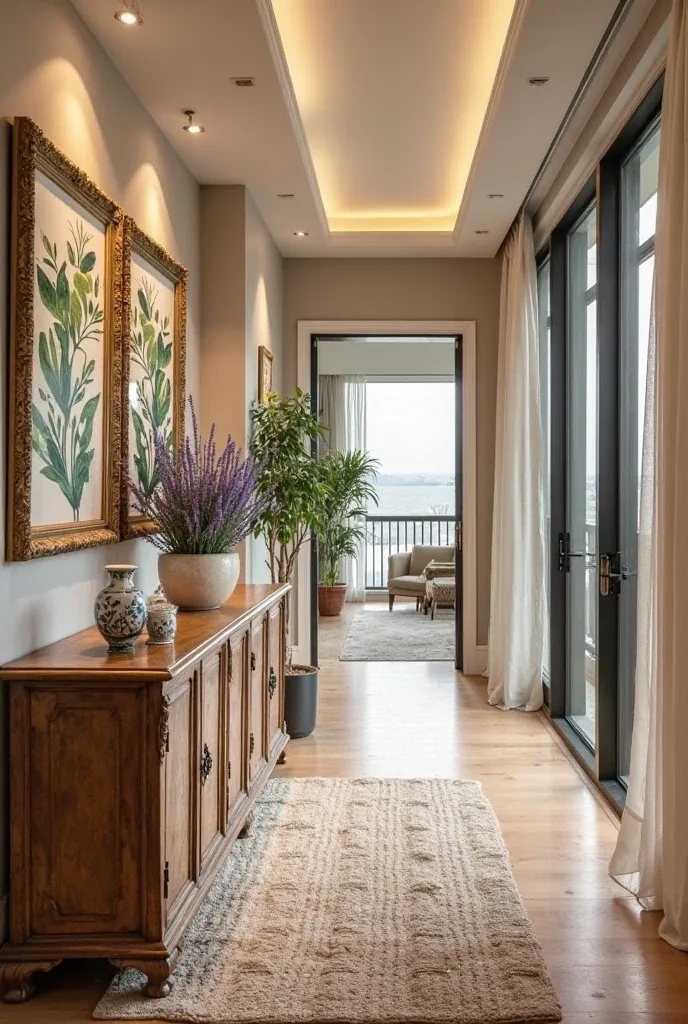
Create sophisticated wall displays through carefully framed botanical prints that reference traditional nature study while adding educational and aesthetic value to hallway spaces. Antique frames and professional matting ensure these displays feel museum-quality rather than casual decoration.
The botanical approach combines scientific accuracy with artistic beauty while providing opportunities to change displays seasonally or as collections grow. Choose prints with consistent color palettes and framing styles to create cohesive galleries that enhance rather than clutter transitional spaces.
This design strategy appeals to homeowners who appreciate natural history and want their hallways to feel as considered and beautiful as primary rooms. The educational element provides conversation topics while demonstrating cultural sophistication.
Quilted Luxury in Master Bedroom Design
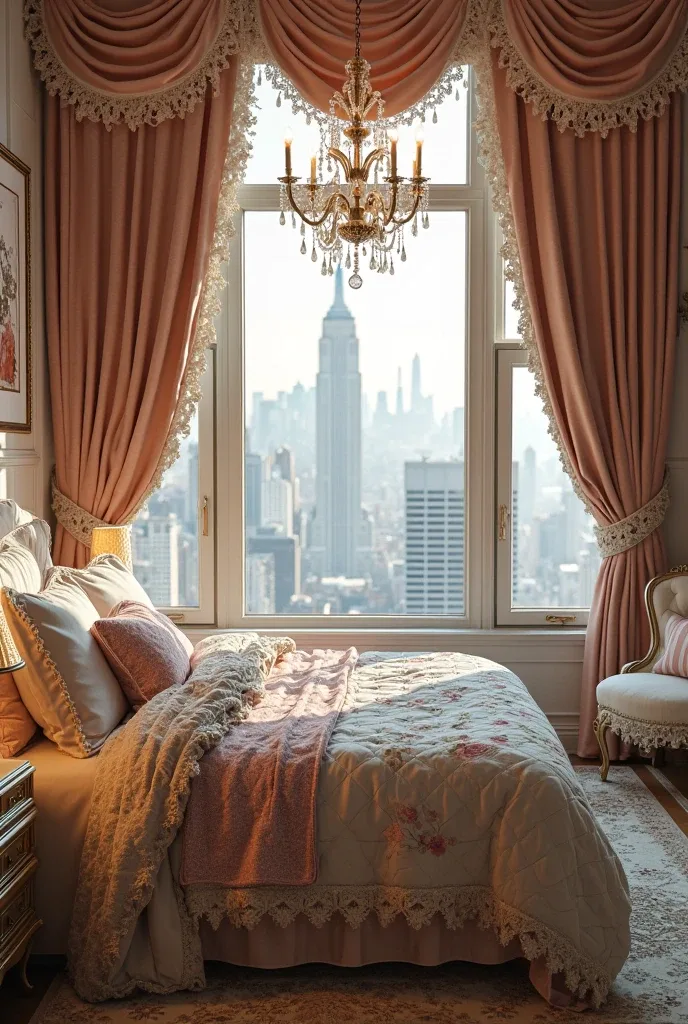
Elevate sleeping spaces through museum-quality quilts and handmade textiles that provide both visual beauty and practical comfort. Layer different textile weights and patterns while maintaining sophisticated color coordination that feels intentional rather than collected randomly.
The quilted approach celebrates traditional American crafts while providing practical benefits like warmth and texture variety. Choose antique quilts in excellent condition or commission contemporary artisans to create custom pieces that reflect your personal style while honoring traditional techniques.
This strategy works particularly well for homeowners who want their bedrooms to feel personally meaningful while maintaining luxury comfort standards. The handmade elements add emotional warmth while providing unique focal points.
Heirloom Display in Formal Dining Environments
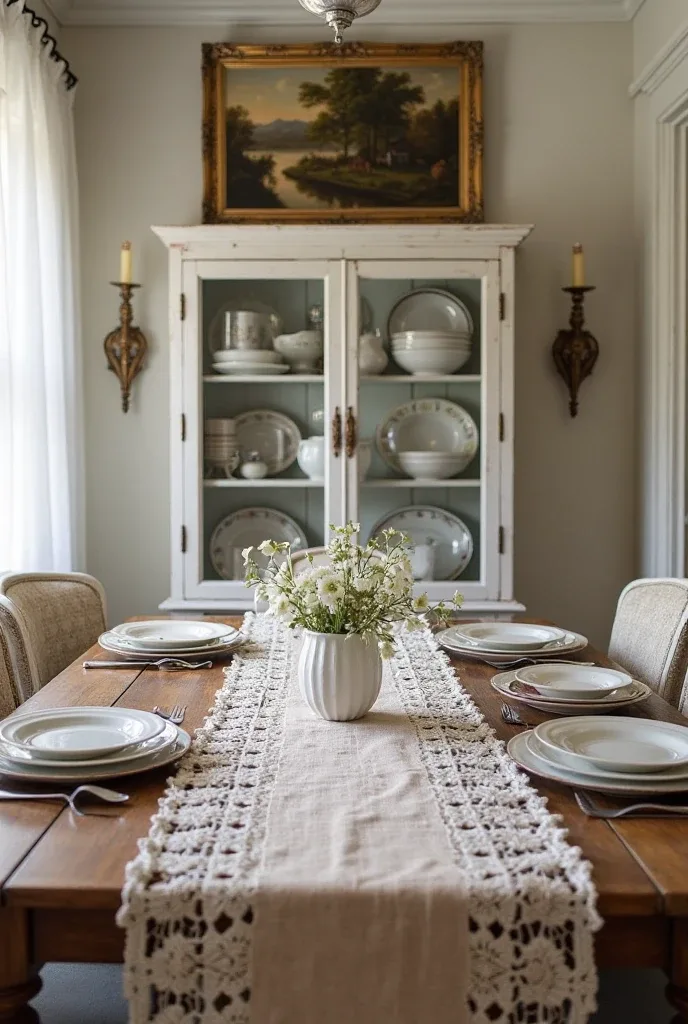
Showcase family treasures through sophisticated china cabinet arrangements and table styling that make inherited pieces part of regular entertaining rather than special-occasion-only display. Coordinate different patterns and periods through careful color selection and thoughtful arrangement.
The heirloom approach requires understanding how to mix different china patterns, silver pieces, and glassware in ways that feel curated rather than cluttered. Professional display techniques and appropriate lighting ensure valuable pieces look their best while remaining accessible for use.
This design strategy appeals to homeowners who have inherited family collections or want to create new traditions around formal dining. The meaningful pieces create environments that encourage special meals and family gatherings.
Frilled Feminine Touches in Sophisticated Settings

Balance traditional feminine details—frilly lampshades, ruffled cushions, and delicate trim work—with contemporary furniture and sophisticated color palettes that prevent these elements from feeling overly sweet or dated.
The frilled approach requires careful editing to ensure decorative details enhance rather than overwhelm spaces. Choose pieces with excellent construction and appropriate scale while maintaining sophisticated color coordination that feels intentional and mature.
This strategy works well for homeowners who want to embrace feminine aesthetics without creating spaces that feel juvenile or overly decorated. The traditional details add personality while maintaining contemporary sophistication.
Vintage Vanity Luxury in Contemporary Bathrooms
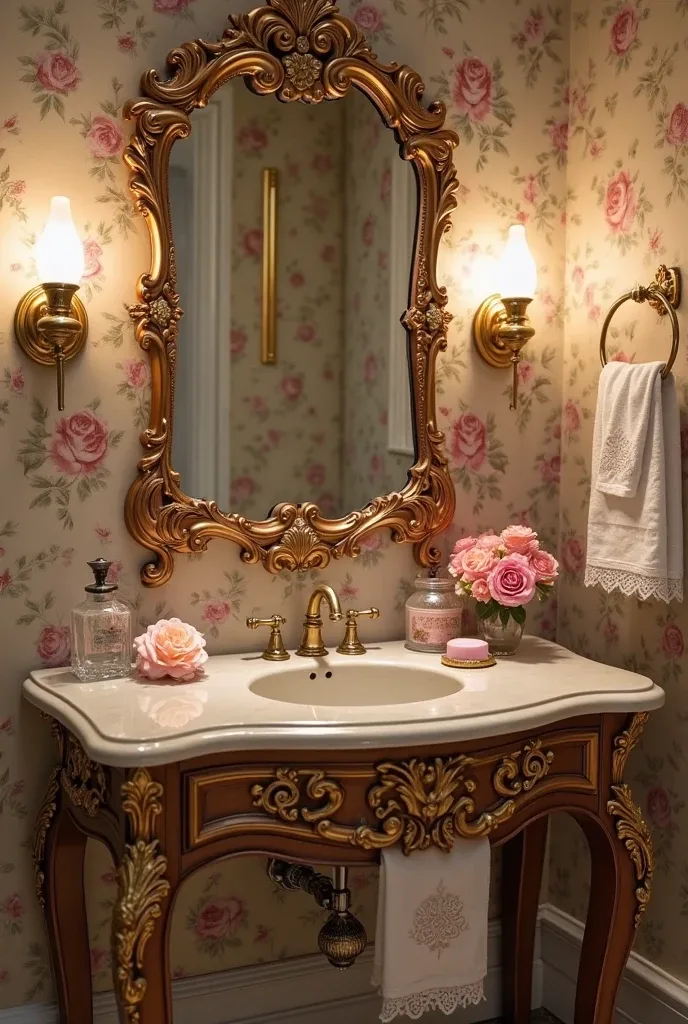
Integrate antique furniture and vintage accessories into modern bathroom design through carefully restored vanities, crystal perfume collections, and traditional grooming accessories that add personality and luxury to utilitarian spaces.
The vintage vanity approach requires understanding how to adapt antique furniture for bathroom use while protecting pieces from moisture damage. Professional restoration and appropriate sealing ensure longevity while maintaining authentic appearance.
This strategy works particularly well for homeowners who want their bathrooms to feel like luxury dressing rooms rather than purely functional spaces. The vintage elements add glamour while providing unique storage and display opportunities.
Also Read: 13 Wall Decor Ideas That’ll Create Gallery-Worthy Luxury In Your Home
Tea Time Tradition in Contemporary Settings

Create formal tea service areas through proper china, silver service pieces, and traditional table settings that encourage slower living and social connection. Design dedicated spaces that make tea time feel special rather than casual.
The tea time approach celebrates British and European traditions while providing opportunities for mindful daily rituals. Choose authentic pieces with excellent craftsmanship while ensuring practical elements like proper storage and easy maintenance.
This design strategy appeals to homeowners who want to incorporate wellness rituals and social traditions into daily life. The formal elements create occasions that encourage connection and mindfulness.
Patchwork Art Integration in Guest Accommodations
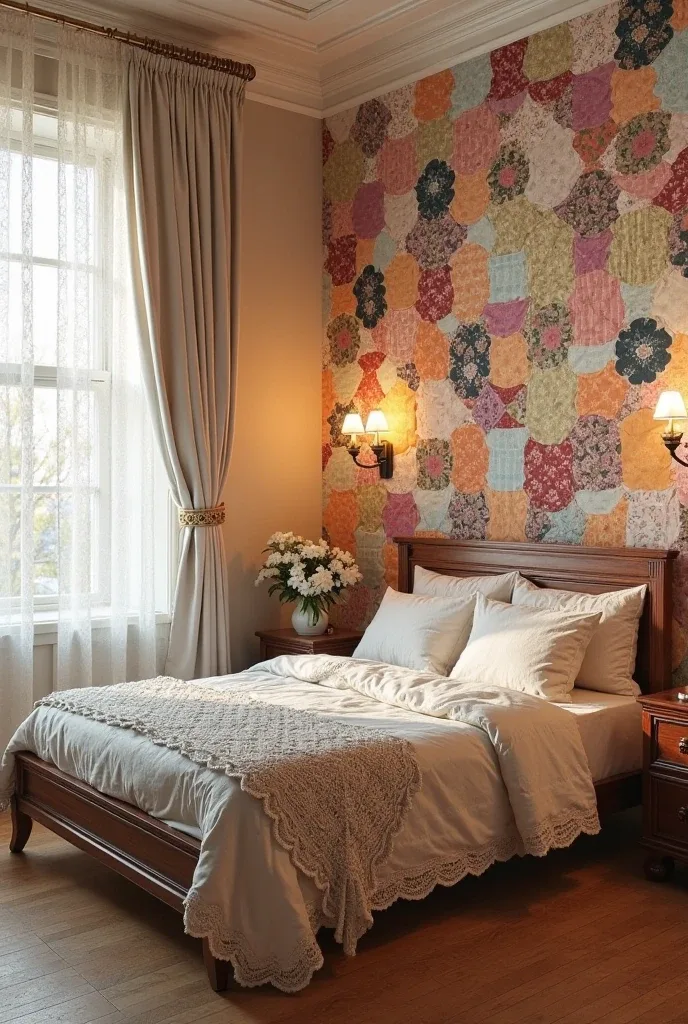
Design welcoming guest spaces through handmade patchwork elements—quilted wall hangings, sewn textile art, and coordinated bedding—that create environments that feel personally crafted rather than hotel-like.
The patchwork approach requires understanding color coordination and pattern mixing to create cohesive environments rather than overwhelming visual chaos. Choose pieces that work together while providing textural and visual interest.
This strategy works well for homeowners who want their guest rooms to feel warm and welcoming while showcasing appreciation for traditional crafts. The handmade elements create memorable experiences for visitors.
Traditional Sewing Corner Design for Creative Pursuits
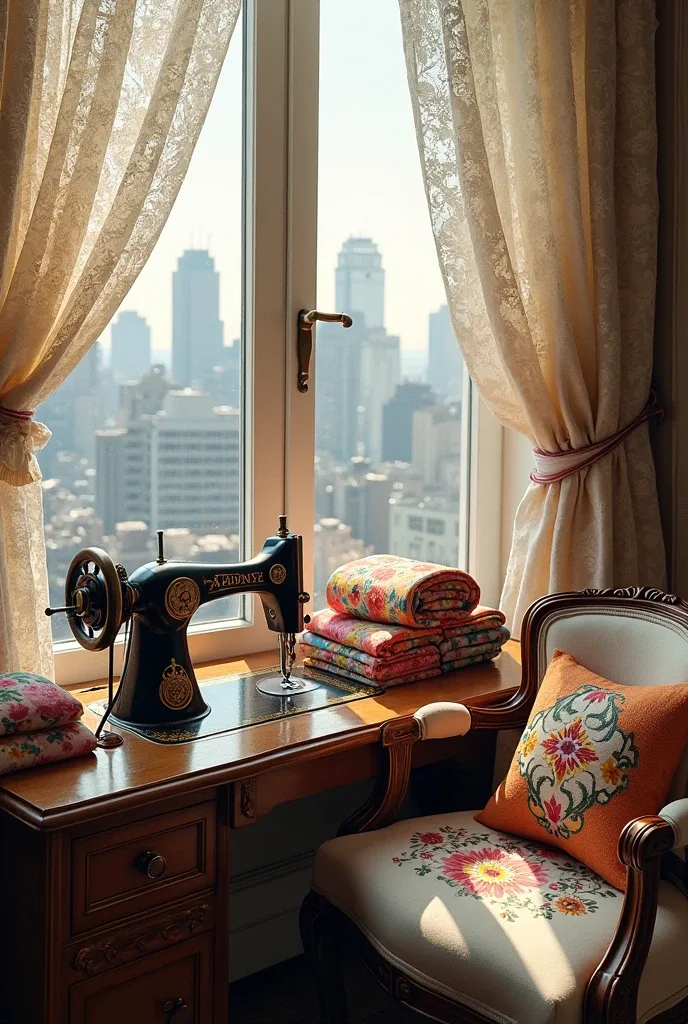
Create dedicated craft areas through vintage sewing machine displays, organized fabric storage, and traditional needlework accessories that support creative activities while adding authentic period charm to contemporary homes.
The sewing corner approach combines functional craft storage with vintage aesthetic appeal while providing dedicated space for creative pursuits. Choose authentic vintage equipment that remains functional or serves as decorative display.
This design strategy appeals to homeowners who practice traditional crafts or want to create inspiring creative spaces. The vintage elements add authenticity while providing practical crafting support.
Gingham Pattern Integration in Casual Dining Spaces
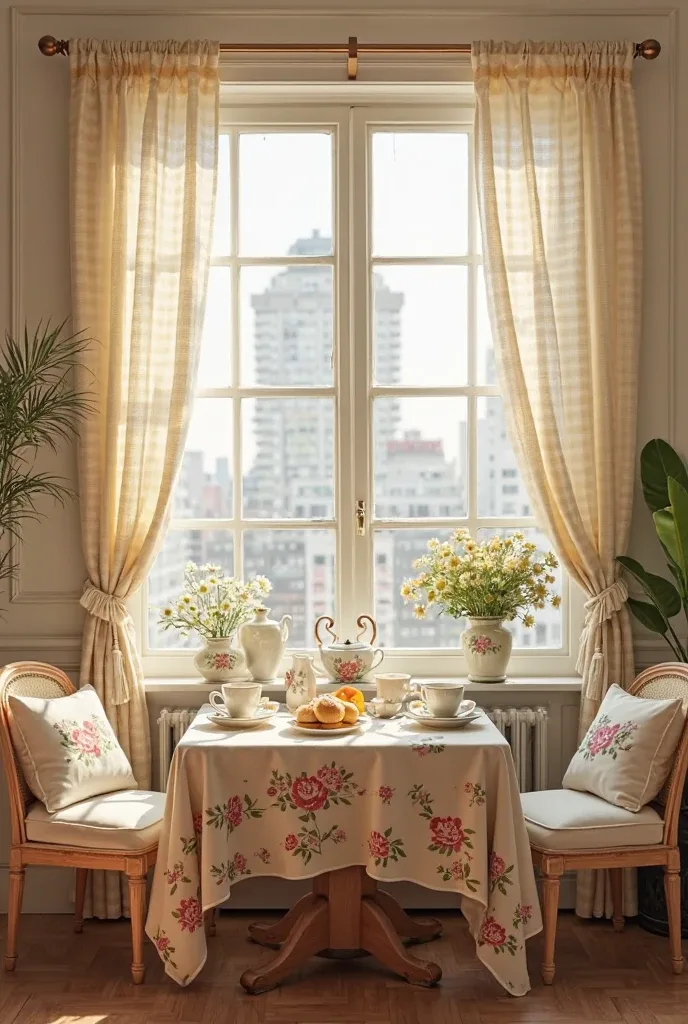
Incorporate traditional gingham patterns through window treatments, table linens, and chair cushions that add cheerful country charm without overwhelming sophisticated interiors. Balance pattern scale and color coordination for contemporary appeal.
The gingham approach references traditional American country style while maintaining sophistication through careful color selection and quality fabric choices. Avoid overwhelming patterns by using gingham as accent rather than dominant element.
This strategy works particularly well in breakfast nooks and casual dining areas where informal comfort is prioritized. The traditional patterns add cheerfulness while maintaining practical functionality.
Final Thoughts
The most successful Grandmacore interiors create environments that honor traditional craftsmanship while supporting contemporary living requirements. These aren’t museum displays of vintage items—they’re thoughtfully curated spaces that make handmade beauty part of daily life while providing the comfort and functionality that modern families need.
Choose Grandmacore elements that resonate with your family history, personal interests, and authentic lifestyle rather than simply following aesthetic trends. The best vintage-inspired homes feel genuine to the families who live in them while creating environments that support connection, comfort, and appreciation for lasting beauty.
Remember that Grandmacore design is about creating emotional connections and supporting slower, more intentional living. Focus on elements that encourage family traditions, seasonal celebrations, and daily rituals that make ordinary moments feel more special and meaningful.
Start with one Grandmacore element that truly speaks to you—whether it’s a family quilt, a collection of vintage teacups, or a love of traditional needlework—and build your home’s personality around that authentic interest. The goal is creating spaces that feel like they’ve been loved and lived in for generations while providing all the modern conveniences that make contemporary life comfortable and convenient.

